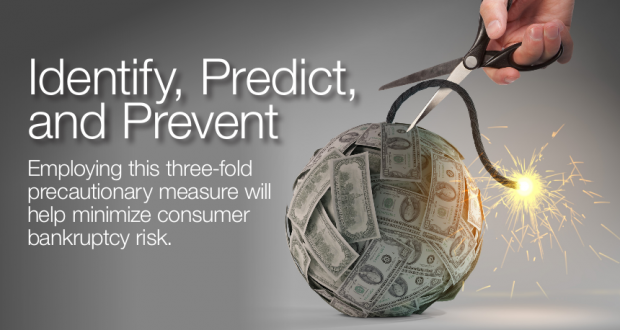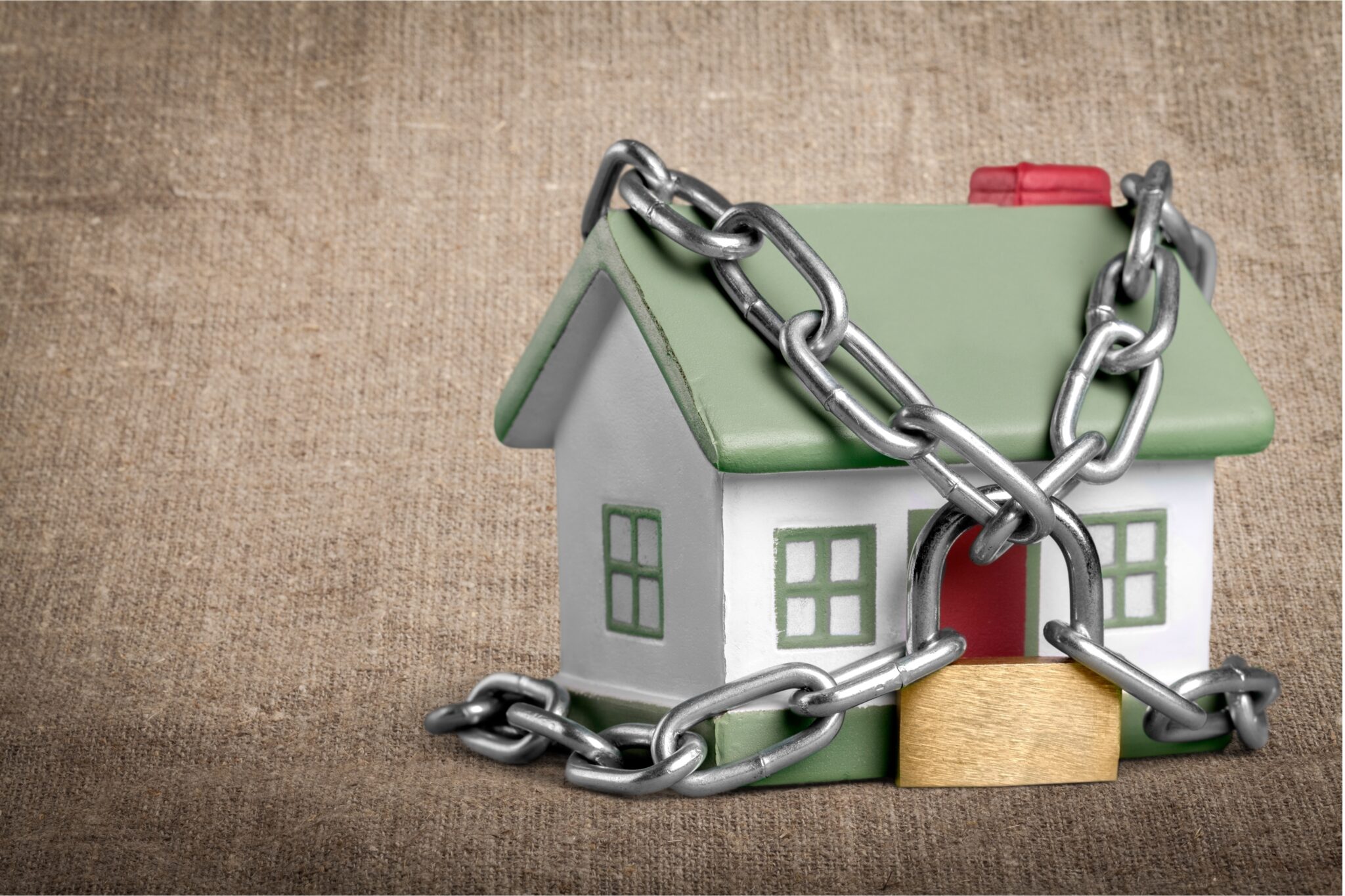Originally appeared in print edition of TheMReport magazine.
Employing this three-fold precautionary measure will help minimize consumer bankruptcy risk.
By Rosie Biundo, Senior Director of Product Marketing, Equifax
According to the U.S. District Court’s administrative offices, from March 31, 2012, until March 31, 2013, there were more than 1.1 million consumer bankruptcies and since 2009, there have been more than 6.5 million personal bankruptcies filed in the United States.In 2005, the Bankruptcy Abuse Prevention and Consumer Protection Act (BAPCPA) was passed, preventing consumers from abusing bankruptcy laws. This resulted in a steep decline in the number of bankruptcy filings from 2005 to 2006, and its effects are still being felt today as more people are forced to file for Chapter 13, as opposed to Chapter 7. In a Chapter 7 bankruptcy, assets are liquidated and given to creditors, and the remaining debt is canceled, giving the debtor a “fresh start.” A consumer must now pass a “means test” to determine Chapter 7 eligibility based on income and expenses.
A Chapter 13 bankruptcy gives debtors the opportunity to become current with their delinquent accounts while still retaining ownership of their property. The debtor is then placed on a repayment plan of up to five years, and any debts not paid back during that timespan are discharged.
The ongoing fluctuations in consumer bankruptcy volumes—with an uptick again in 2010 and a gradual decline since then—have left lenders, servicers, and investors with serious pain points in identifying at-risk consumers for bankruptcies. In a highly regulated environment, lenders need to be able to achieve consistent processes and decisioning, and servicers and investors need to leverage predictability to identify consumer bankruptcy in advance and protect portfolio stability.
Bankruptcy risk scores should be fueled by the most up-to-date scores to improve profitability and predictability, but how can servicers, lenders, and investors protect themselves and their businesses from the potential risk of consumer bankruptcy?
Not So Ordinary
Historically, lower consumer credit translates to an increase in bankruptcy filing rates. This simultaneously decreases consumer confidence in spending and the ability to save. But something one doesn’t often think about: Even those consumers who do qualify for credit are often still at risk of eventually filing for bankruptcy should they be subjected to a “bump” in their financial road. Having specialized insights into a consumer’s wallet and financial health provides a better defense to the immediate, long-term, or surprise risk of bankruptcy. Optimally, the likelihood of consumer bankruptcy must be analyzed over a span of 24 months, leveraging analytics and integrated risk insight throughout the entire customer lifecycle to pinpoint potential customers.
A typical consumer may be current with payments and exhibit no immediate threat of default; however, certain characteristics on the account may highlight the potential for future bankruptcy. Historical data may identify an at-risk consumer months in advance, enabling servicers, lenders, and investors to take precautions and mitigate the risk before it comes to fruition. Certain behaviors—multiple credit cards, high credit limits, zero balances on credit cards, utilization of credit cards but no received payments—are the typical characteristics lenders should identify in customer profiles when evaluating bankruptcy risk.
Once, Twice, Three Times the View
Bankruptcy models that are tri-bureau enabled allow lenders to pull standardized views of consumer credit information across any of the three major credit reporting agencies (CRAs) to drive more confident, consistent credit decisions and maximize business performance. Score ranges that distinguish potentially profitable consumers from those who are likely to cause significant losses enable lenders to independently evaluate bankruptcy risk and improve decisioning stability.
Expansive samples help better predict bankruptcy risks and improve long-term performance throughout the entire consumer lifecycle, identifying red flags that are specific to a lender’s business objectives. Decisioning and predictability provides an early warning for lenders as to what’s happening with certain consumers. Lenders are able to make strategies on how to move forward with consumers who have a high bankruptcy risk by leveraging decisioning that accurately distinguishes high-risk accounts.
Consistent Treatment and Decisions
Bankruptcies are hard for lenders to recover from. The processes of retrieving information on a specific consumer and obtaining bankruptcy payments are obstacles. Using a bankruptcy score that is consistent across all three credit bureaus is crucial in making key decisions. Creditors may have bankruptcy scores from all three bureaus but they will not reflect the same risk. By using scores that are consistent across the bureaus, lenders will receive a consistent decision regarding a consumer’s potential risk for bankruptcy.
The Consumer Financial Protection Bureau (CFPB) wants to see lenders’ utilization of consistent decisioning for consumers. The CFPB pays close attention to creditors and what they’re doing regarding policies and decisioning. Lenders’ treatment of customers must be consistent—like their loan decisions.
A Look into Consumers’ Past
Financial tendencies are better understood in patterns. Utilizing a bankruptcy model that leverages historical data to predict the likelihood a consumer will file for bankruptcy enables lenders to identify and mitigate risk across a consumer’s lifecycle.
A performance definition within a bankruptcy risk model reveals if a trade is bad or good. If a Chapter 7 or 13 bankruptcy has occurred on an individual’s file during the 24-month performance window, the trade is considered bad. Spotting bankruptcy earlier, and avoiding it, helps lenders make timely decisions by leveraging market-leading consumer credit data and analytics. Utilizing models that have been upgraded over time will provide lift performances and better recognize high-risk customers.
Looking at the entire consumer lifecycle to identify, and hopefully, reduce bankruptcy risk enables lenders, investors, and servicers to target certain characteristics and make more consistent decisions across the lifecycle, such as:
Account Acquisition—To approve, deny, or set initial limits with consumers in a home equity line of credit (HELOC), for example;
Portfolio Management—To review portfolios, determine segmentation, and apply treatment strategies earlier in the process to help mitigate losses before they occur;
and Collections—To prioritize accounts and determine aggression level in collection actions.
A consumer’s lifecycle will reveal data that is crucial in distinguishing profitable consumers and protecting portfolio profitability. Bankruptcy risk scores can also support underwriting of HELOCs since the information provided will help lenders decide to approve or decline a consumer based on potential for bankruptcy within two years.
Consumer Delinquency Risk
As the economy continues to recover and banks open up more opportunities to consumers, it is imperative that servicers and investors are monitoring those consumers who are delinquent, or may become delinquent. Identifying various borrower propensities for bankruptcies and their delinquencies will enable servicers to make better decisions and investors to protect portfolio stability.
According to Equifax National Consumer Trends data, as of October 2013, the 30-day delinquency rate for total home finances, which includes first mortgages and HELOCs, is 5.45 percent, and total home finance write-off dollars year-to-date in October 2013 is $96.3 billion. Although this is a six-year low for year-to-date in October 2013 and a 22 percent decrease from year-to-date in October 2012, consumer mortgage delinquencies have the probability to advance into consumer bankruptcies.
Although transitions to deeper stages of delinquency are slowing, servicers and investors will need to be cognizant of mortgage delinquencies within a consumer’s lifecycle. According to the same data, mortgages originated from 2005 to 2007 comprised 64 percent of severely delinquent balances, with mortgages since 2009 comprising just 21.8 percent of severely delinquent balances. However, lenders are still encouraging borrowers to sign up for payment plans so that they do not become delinquent, thus decreasing the chances of bankruptcy.
Eliminate Bankruptcy Surprises
Lenders, servicers, and investors need to protect themselves from the surprise, immediate, or long-term effects of consumer bankruptcy. Deep and predictive 24-month consumer insight data and analytics provide lenders with the ability to predict bankruptcies and make more consistent decisions. Leveraging tri-bureau enabled models distinguishes profitable consumers from at-risk consumers, enabling lenders to advance or curtail borrower opportunities or investors to predict portfolio profitability.
The consumer lifecycle is a complex entity, which must be matched by comprehensive data in order to improve bankruptcy prediction and increase decisioning stability. Investors can better protect portfolios and lenders can have a more positive loan acquisition experience when risk is reduced and profitable services are better understood. Achieving consistent decisioning and leveraging predictability can identify, predict, and prevent consumer bankruptcy.

 theMReport.com Your trusted source for mortgage banking news
theMReport.com Your trusted source for mortgage banking news









